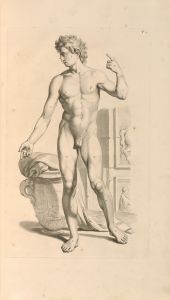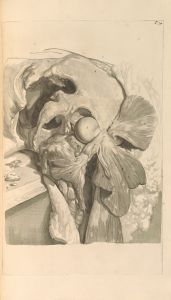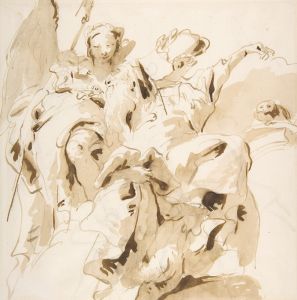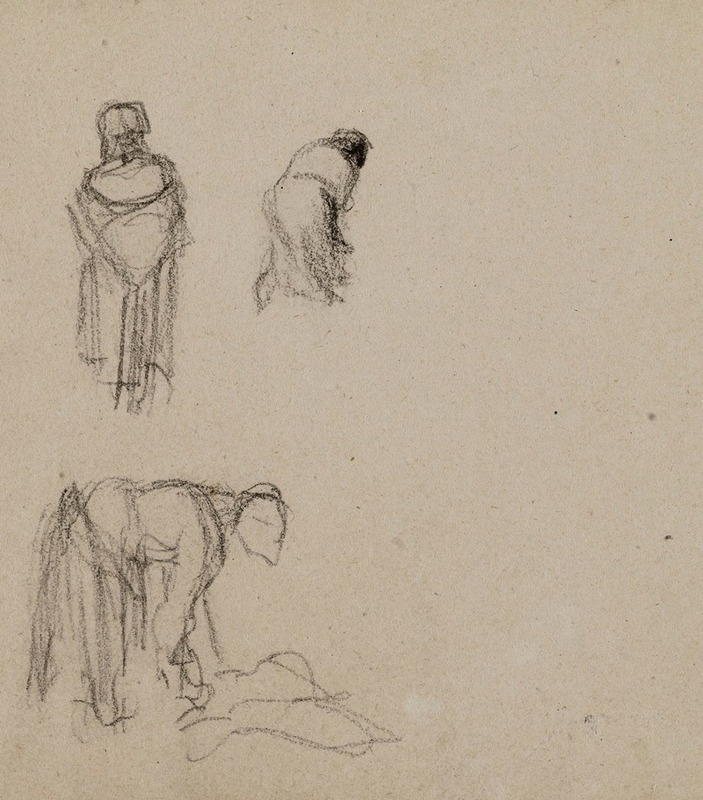
Trois esquisses de femmes
A hand-painted replica of Narcisse-Virgile Diaz de La Peña’s masterpiece Trois esquisses de femmes, meticulously crafted by professional artists to capture the true essence of the original. Each piece is created with museum-quality canvas and rare mineral pigments, carefully painted by experienced artists with delicate brushstrokes and rich, layered colors to perfectly recreate the texture of the original artwork. Unlike machine-printed reproductions, this hand-painted version brings the painting to life, infused with the artist’s emotions and skill in every stroke. Whether for personal collection or home decoration, it instantly elevates the artistic atmosphere of any space.
Narcisse-Virgile Diaz de la Peña (1807-1876) was a French painter of Spanish descent, known for his association with the Barbizon School, a movement that emphasized naturalism and the beauty of the French countryside. One of his notable works is "Trois esquisses de femmes" (Three Sketches of Women), which showcases his skill in capturing the human form and his sensitivity to light and color.
"Trois esquisses de femmes" is a painting that features three separate studies of women, each depicted in a different pose and attire. The work is a testament to Diaz de la Peña's ability to render the delicate nuances of the female figure and his keen observation of human anatomy. The sketches are characterized by their fluid brushwork and the subtle interplay of light and shadow, which bring a sense of life and movement to the figures.
Diaz de la Peña's approach to painting was influenced by his early training and the artistic environment of his time. He was initially trained as a porcelain painter, which honed his attention to detail and his ability to work with fine, intricate designs. This background is evident in the meticulous rendering of the women's clothing and the delicate features of their faces in "Trois esquisses de femmes."
The Barbizon School, with which Diaz de la Peña was closely associated, was a group of artists who settled in the village of Barbizon near the Forest of Fontainebleau. They were united by their desire to break away from the formalism of academic art and to paint directly from nature. Diaz de la Peña, along with other members of the Barbizon School such as Jean-François Millet and Théodore Rousseau, sought to capture the transient effects of light and atmosphere in their work. This emphasis on naturalism and the depiction of everyday life is reflected in "Trois esquisses de femmes," where the artist's focus is on the realistic portrayal of his subjects.
Throughout his career, Diaz de la Peña was known for his versatility and his ability to work in various genres, including landscapes, genre scenes, and figure studies. His work was well-received during his lifetime, and he exhibited regularly at the Paris Salon, the official art exhibition of the Académie des Beaux-Arts in Paris. "Trois esquisses de femmes" is an example of his figure studies, which were highly regarded for their elegance and technical proficiency.
In addition to his contributions to the Barbizon School, Diaz de la Peña's work also had an influence on later artists, including the Impressionists. His use of vibrant colors and his loose, expressive brushwork can be seen as a precursor to the techniques employed by artists such as Claude Monet and Pierre-Auguste Renoir.
"Trois esquisses de femmes" remains an important work in Diaz de la Peña's oeuvre, highlighting his skill as a draftsman and his sensitivity to the human form. The painting continues to be appreciated for its artistic merit and its place within the broader context of 19th-century French art.





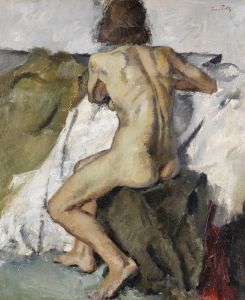
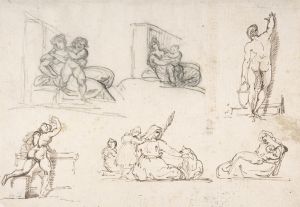
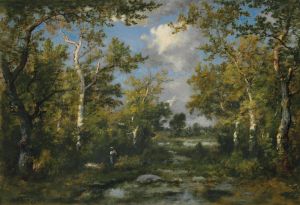


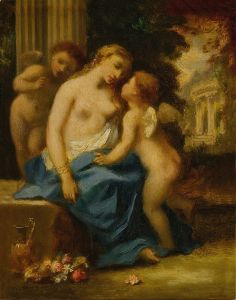
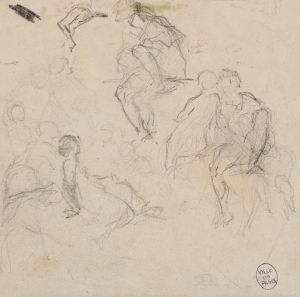
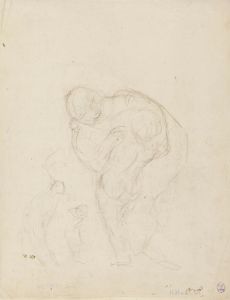
![Miscellaneous small sketches for inlaid table tops.] [Design with red geometric motif](/imgs/249442/s/winold-reiss-miscellaneous-small-sketches-for-inlaid-table-tops-design-with-red-geometric-motif-c586b6d.jpg)
